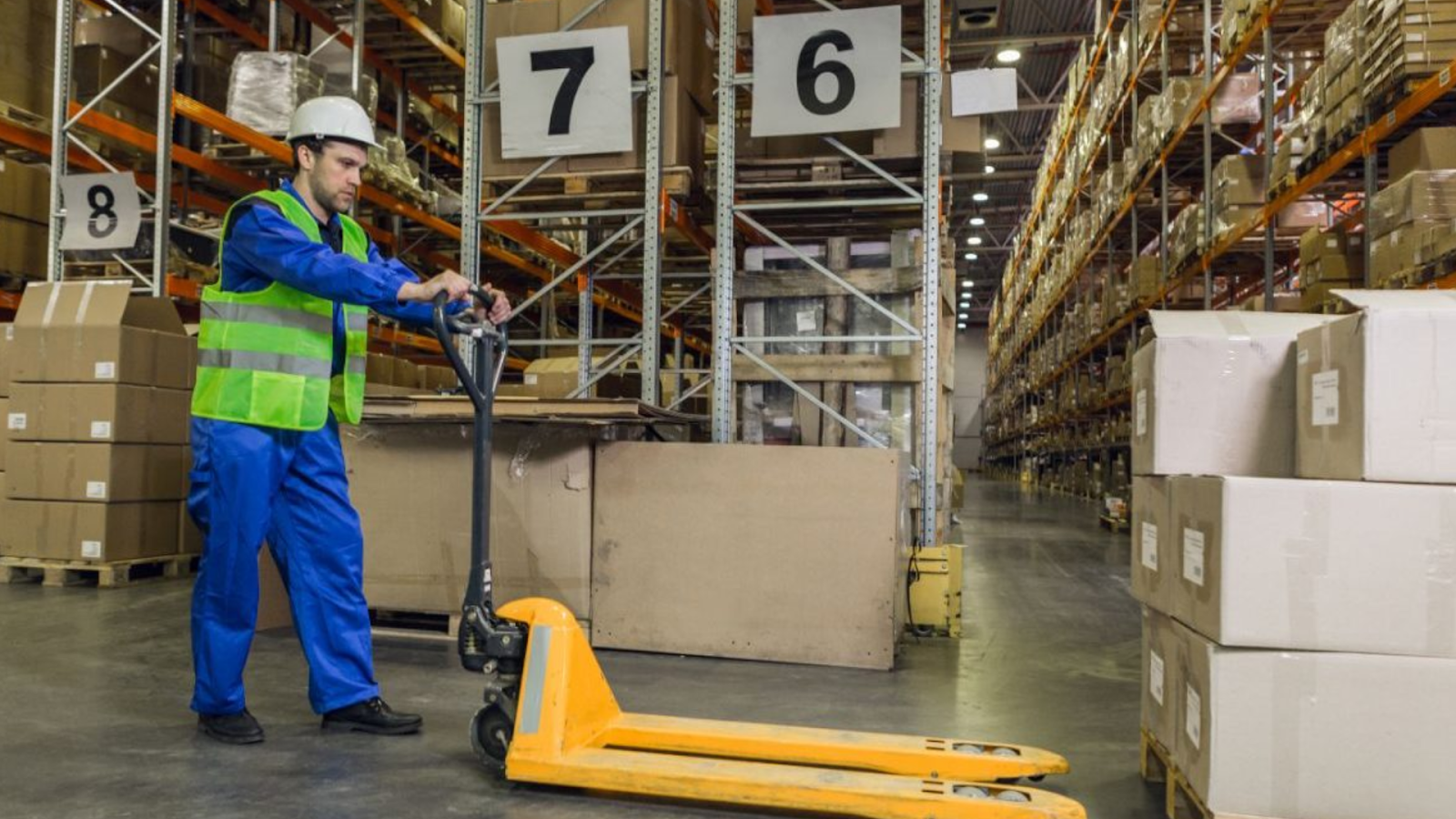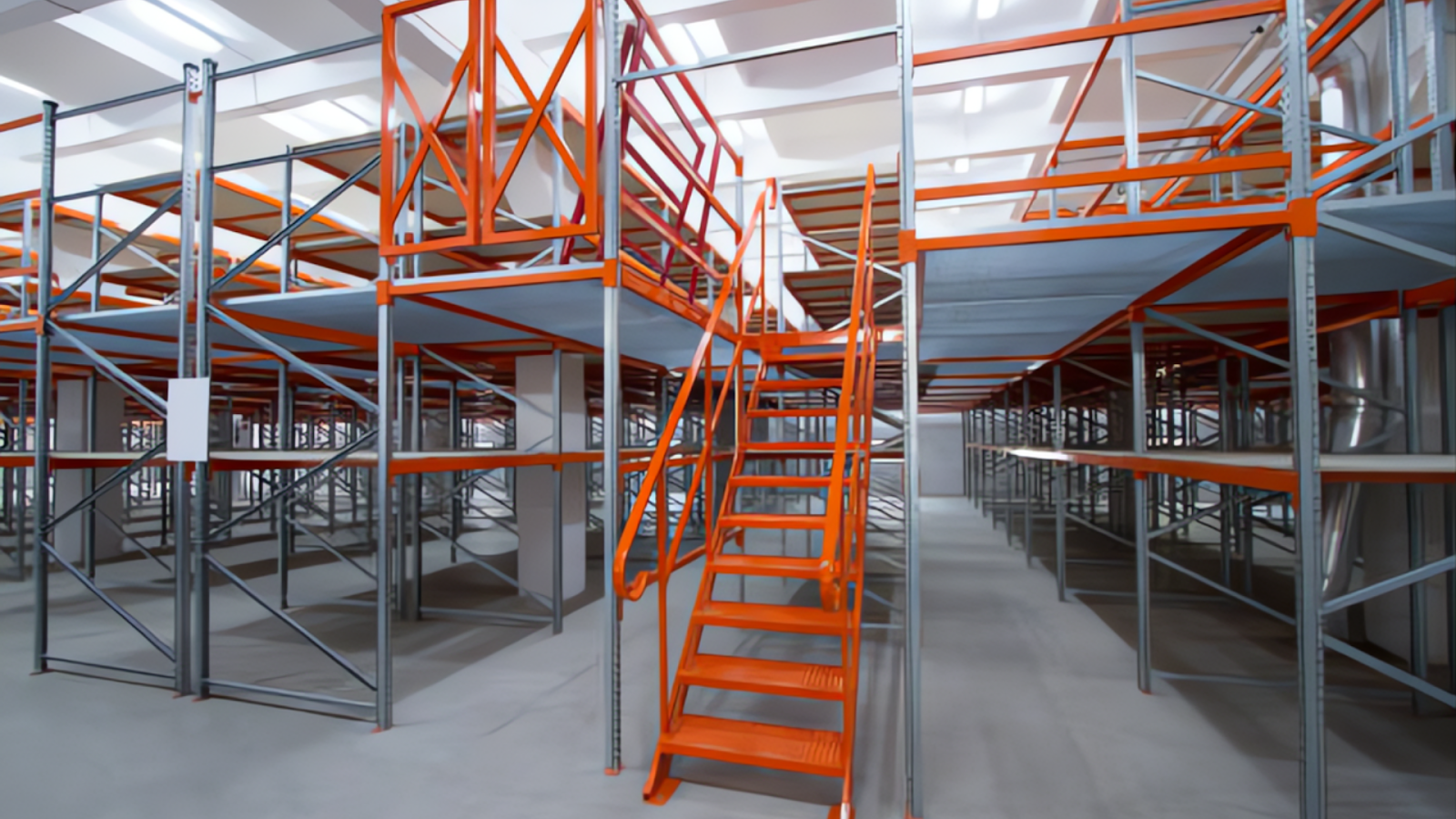Pallet jacks are essential tools for industries like warehousing, logistics, manufacturing, and construction, providing an efficient and safe way to move heavy loads. However, when a pallet jack will not lift, it can lead to significant downtime, bottlenecks, and safety hazards.
In fact, OSHA found that 25% of Electric Pallet Jack accidents are due to inadequate operator training. For Operations Managers, Facilities Managers, and Business Owners, ensuring that pallet jacks are fully functional is critical to maintaining safety, compliance, and operational efficiency.
In this guide, we’ll walk you through the steps to troubleshoot and fix a non-lifting pallet jack, addressing the common issues that could be disrupting your operations.

Identifying the cause of your pallet jack's lift issue is the first step in addressing the problem. Understanding these problems allows you to take the right action and minimize the risk of equipment failure in high-demand industries like warehousing and logistics. The following are some common reasons why your pallet jack may not be lifting correctly:
Struggling with a pallet jack that won’t lift? Source Equipment offers high-quality options like the Advantage™ Pro-Max Scale Pallet Truck, which combines precise weighing with lifting power for greater efficiency. If you need rugged performance, the Advantage™ Pro-Max All-Terrain Pallet Truck is perfect for tough environments. Trust Source Equipment to supply durable, reliable trucks that help you stay compliant and optimize your warehouse operations.
Explore our product catalog to find the ideal solution for your facility.
Understanding these potential issues helps Facilities Managers and Safety Officers identify the right repair method and act quickly to minimize downtime and ensure safety. Now, let’s discuss two methods for solving pallet jack lifting issues, starting with the first method of removing trapped air.
A simple solution to your pallet jack not lifting could be trapped air in the hydraulic system. Air pockets can form, especially when the jack hasn’t been used to lift heavy loads for a while. By pumping the handle, you can remove the air, restoring the hydraulic pressure needed for proper operation. This is a quick and easy fix, particularly useful in high-volume warehousing or manufacturing environments where downtime can significantly affect productivity.
Follow these simple steps to clear the air and get your jack lifting again.
Materials and Tools Needed:
Ensure the pallet jack is on a stable, level surface to allow proper fluid movement and air removal. This ensures the air is correctly expelled from the hydraulic system. For Operations Managers, a flat, smooth surface is essential for conducting this process safely and efficiently.
Lower the pallet jack to its lowest setting. This helps to reset the hydraulic system and prepares the jack for pumping. Lowering it fully also ensures that the system is in its resting position, making air removal more effective. This step is crucial in preventing further system malfunctions in industries where space utilization is key, as proper maintenance of equipment minimizes unnecessary storage space.
Begin pumping the handle slowly. Each pump will expel trapped air from the hydraulic system, and you should begin to feel resistance as pressure builds. For Safety Officers, it's important to be aware that the jack will feel lighter initially until air is removed. Pumping 10 to 15 times may be necessary to fully expel the air.
After several pumps, try lifting the pallet jack. If the air has been successfully removed, the jack should begin lifting with a smooth motion. For Facilities Managers, this step is key to verifying that the pallet jack operates efficiently again, reducing unnecessary downtime.
Test the jack by raising and lowering it multiple times to ensure it operates smoothly. If the pallet jack now lifts without issue, trapped air was likely the cause. For Business Owners, this is a cost-effective solution that helps extend the lifespan of your equipment and prevents unnecessary repairs.
If the pallet jack is still not lifting after this step, the issue may lie with other components, such as the O-ring or hydraulic fluid levels.

If trapped air isn’t the cause of the issue, a worn-out or damaged O-ring could be preventing your pallet jack from lifting. The O-ring helps maintain hydraulic fluid pressure, and if it’s compromised, the jack will lose pressure and fail to lift. Replacing the O-ring can restore full functionality and prevent future fluid leaks. This method is especially useful in high-demand environments where compliance with safety standards is crucial.
Here’s a step-by-step guide to help you replace the O-ring and get your pallet jack working properly again.
Materials and Tools Needed:
To begin, lift the pallet jack and secure it on a stable block or platform. This will provide you with the necessary access to the hydraulic components. For Procurement Managers, ensuring the jack is stable and properly supported is essential to avoid accidents during the repair process.
Before replacing the O-ring, you’ll need to drain the hydraulic fluid. Place a clean container underneath to catch any fluid that spills out. Draining the system ensures that no old fluid remains when replacing the O-ring, preventing contamination. This step also promotes the proper function of your hydraulic system, which is critical in logistics operations where efficiency is a top priority.
Using the appropriate tools, remove the lower lever, which typically requires a screwdriver or wrench. This step will expose the hydraulic mechanism and allow access to the O-ring. Safety Officers should be mindful of the surrounding components during disassembly to avoid unnecessary damage.
Next, carefully remove the valve cartridge, which is usually secured by bolts. Use a wrench to loosen and remove the securing nut. Once the valve is free, gently pull it out to access the O-ring. For Facilities Managers, this step is vital for gaining full access to the hydraulic components and ensuring you can replace the faulty O-ring.
After replacing the old O-ring with a new one, refill the hydraulic system with the recommended hydraulic fluid. Ensure the fluid reaches the proper level as indicated by the manufacturer’s instructions. Once the valve cartridge and lower lever are reassembled, test the pallet jack by lifting and lowering it several times. This restores the pressure required for smooth operation, allowing you to resume operations without issues.
For warehouses where downtime is costly, Source Equipment provides efficient, heavy-duty solutions like the Advantage™ Pro-Power Fully Electric Pallet Truck and the 4-Way Pallet Truck, which offers exceptional maneuverability in tight spaces. These products improve operational efficiency, enhance safety, and reduce the risks of bottlenecks. Let Source Equipment help you find the right equipment to keep your operations running smoothly.
Request a consultation today to see how we can assist you.
With these solutions, you can ensure that your pallet jacks are running smoothly, just as Source Equipment helps keep your stackers in optimal condition.

When your pallet jack will not lift, getting it back in working order is crucial for maintaining productivity and safety in your operations. At Source Equipment, we specialize in providing high-quality material handling and storage equipment to ensure your warehouse runs smoothly and efficiently.
If you're facing issues with your pallet jack, Source Equipment has the right tools and equipment to address the problem quickly and efficiently. Consider upgrading or replacing your current equipment with products designed for maximum performance and reliability:
If your pallet jack will not lift, Source Equipment’s product range has the right solutions to get your operations back on track. We supply durable products that improve productivity and reduce downtime.
A faulty pallet jack that will not lift can disrupt operations in industries like warehousing, logistics, and manufacturing, where efficiency is key. By addressing issues like trapped air or a damaged O-ring, you can quickly restore functionality.
Regular maintenance helps prevent future breakdowns, ensuring safe, compliant operations. These solutions save time, improve safety, and boost operational efficiency, ultimately enhancing ROI and productivity for Operations Managers, Safety Officers, and Business Owners.
When your pallet jack will not lift, it's critical to find a quick and effective solution. Source Equipment supplies a wide range of pallet trucks and handling solutions designed for safety and efficiency. With decades of expertise, Source Equipment ensures you have the right tools to maintain a safe and efficient workspace.
Request a quote today and get your warehouse back to full capacity.
There are several common causes, including trapped air in the hydraulic system, a damaged O-ring, or low hydraulic fluid levels. Over time, these issues can prevent the pallet jack from generating the necessary pressure to lift heavy loads. If the pallet jack hasn’t been used for a while, air may be trapped in the system, reducing lifting power. Checking for these issues regularly can help you troubleshoot and fix the problem quickly before it disrupts operations.
To remove trapped air, simply pump the handle several times while the jack is lowered to its lowest position. This action will allow the air to escape, reestablishing hydraulic pressure and restoring lifting function. If pumping the handle doesn’t work, you might need to check for further issues, like low fluid levels or damaged seals. Removing trapped air is a quick fix that can resolve minor lifting problems and get your pallet jack back to work.
If your pallet jack is leaking hydraulic fluid or failing to generate enough pressure, the O-ring could be damaged or worn out. The O-ring seals the hydraulic system, and if it’s compromised, fluid will leak, causing a loss of pressure and preventing the jack from lifting. To confirm, inspect the O-ring and replace it if it appears cracked, worn, or deformed. Replacing the O-ring will restore hydraulic pressure and bring your pallet jack back to full functionality.
Yes, low hydraulic fluid is a common cause for a pallet jack that won’t lift. Hydraulic fluid is necessary for generating pressure to raise the load. When fluid levels are low, the pump cannot build enough pressure, and the jack will fail to lift. Check the hydraulic fluid level and top it off with the correct type of fluid if needed. Regularly maintaining fluid levels is essential for the smooth operation of your pallet jack.
If trapped air, a damaged O-ring, or low fluid doesn’t solve the issue, the problem could be with the pump, valve, or internal components of the pallet jack. In this case, it’s best to consult a professional for a more thorough inspection and repair. A damaged pump or valve may require replacement, and it’s crucial to address these issues promptly to avoid complete failure. Regular maintenance and professional servicing can help prolong the life of your pallet jack.




Ready to Upgrade Your Process Operations?